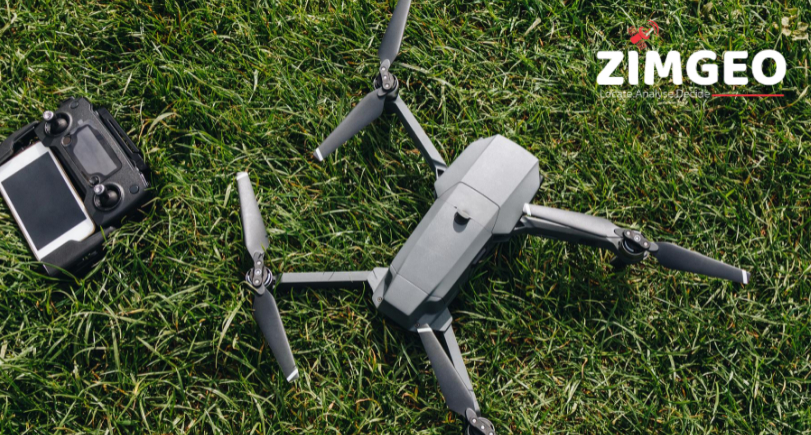Remote sensing applications for Mineral Exploration in Zimbabwe

Remote Sensing Applications in Agriculture for Zimbabwe
January 15, 2023
Solar water pumps
January 29, 2023Introduction
Remote sensing refers to acquiring and interpreting images of the earth from a distance. Remote sensing techniques have been used to detect ore deposits in Zimbabwe with considerable benefits. The primary objective is to identify information relevant to the mineral deposit or mining exploration and mining activity. Spectral processing is the most basic form of remote sensing analysis. Spectral analysis involves extracting quantitative information about the characteristics of an object by determining reflectance properties at different wavelengths across the electromagnetic spectrum. Subsets of this data are often used when performing spectral analysis applying filters based on the chemical or mineralogical content of an area of interest
Remote sensing refers to acquiring and interpreting images of the earth from a distance.
Remote sensing refers to acquiring and interpreting images of the earth from a distance. There are many types of sensors that can be used to collect information about the earth’s surface. Remote sensing is used by governments, businesses, and individuals to collect data on many different aspects of our planet. Some examples include:
- Monitoring crops
- Assessing environmental health (e.g., pollution levels)
- Finding buried objects like pipes or cables
Remote sensing techniques have been used to detect Ore deposits in Zimbabwe with considerable benefits.
Remote sensing techniques have been used to detect Ore deposits in Zimbabwe with considerable benefits. The method is fast and relatively cheap, it provides high resolution images and can be carried out at any time of the day or night. It is also possible to provide information on ore deposits underground as well as surface features such as vegetation, soil moisture content and topography. Detection of these kinds of features can help identify areas where further exploration should take place in order to determine whether there are profitable minerals present or not.
The primary objective is to identify information relevant to the mineral deposit or mining exploration and mining activity.
The primary objective is to identify information relevant to the mineral deposit or mining exploration and mining activity. This can be accomplished in a number of ways with remote sensing imagery, including:
- Identifying mining activities (e.g., open pit mine)
- Identifying mineral deposits (e.g., ore body)
Spectral processing is the most basic form of remote sensing analysis.
Spectral processing is the most basic form of remote sensing analysis. A digital image is a collection of pixels. Each pixel in the scene can be described by its intensity or brightness. The spectral properties are represented by their wavelengths, which are related to their frequency (corresponding to color).
The first step in spectral processing is to separate the image into its spectral bands: one for each spectral band, based on how much of each wavelength is present at each pixel location. This separation process can be done using filters or using mathematical algorithms such as principal component analysis (PCA) or partial least squares regression (PLSR).
Spectral analysis involves extracting quantitative information about the characteristics of an object by determining reflectance properties at different wavelengths across the electromagnetic spectrum.
Spectral analysis is a technique used to extract quantitative information about the characteristics of an object by determining reflectance properties at different wavelengths across the electromagnetic spectrum. This can be done using either a spectrometer or by measuring transmittance through a monochromator.
Spectral analysis is often performed on visible light, but it can also be applied to other parts of the electromagnetic spectrum such as infrared or ultraviolet radiation.
Subsets of this data are often used when performing spectral analysis applying filters based on the chemical or mineralogical content of an area of interest.
Spectral analysis is a useful tool for mineral exploration. Spectral analysis can be used to identify minerals associated with ore deposits. This involves the application of filters based on the chemical or mineralogical content of an area of interest, which may include gold, copper or diamonds. The filters are applied to remotely sensed imagery and then processed on a computer using software packages such as ENVI (an image processing program). Subsets of this data are often used when performing spectral analysis applying filters based on the chemical or mineralogical content^1^ in an area of interest.
Data obtained from hyperspectral sensors can be particularly useful for identifying minerals associated with ore deposits.
Hyperspectral remote sensing is particularly useful for identifying minerals associated with ore deposits. The technology can be used to detect the chemical composition of minerals and rocks, and could therefore be used to identify those that are associated with ore deposits.
Using a combination of advanced remote sensing applications such as geophysics, geochemistry, aerial photography and fieldwork is quite key for good results and effective mineral exploration.
Using a combination of advanced remote sensing applications such as geophysics, geochemistry, aerial photography and fieldwork is quite key for good results and effective mineral exploration.
Geophysics is the study that uses physical methods to investigate the nature of the Earth’s crust and interior. Geophysical surveys include gravity mapping, magnetometer survey, ground penetrating radar (GPR) and electromagnetic induction surveys. Gravity measurements are used to determine density variations within the subsurface which in turn can indicate changes in rock type or mineralisation as well as hydrocarbon deposits.
Magnetometer surveys measure natural magnetic fields using an instrument similar to an electric compass but with more sensitivity than conventional instruments. A magnetometer measures both vertical variations in the Earth’s magnetic field over its surface as well as horizontal variations throughout its volume because these properties vary depending on external factors such as the presence of iron-rich minerals in rocks or hydrocarbons that are often associated with earthquakes. By analysing these data one can get information about potential ore bodies or even find evidence for oil fields not yet discovered by conventional methods like drilling! GPR sends radio waves into shallow layers beneath your feet then records how long it takes for them bounce back before converting those returned signals into images showing us what lies beneath our feet! This technique has been extremely successful at finding buried objects such as planes that crashed during World War II by using airwaves instead
Hyperspectral remote sensing is useful for identifying minerals associated with certain types of ore deposits.
Hyperspectral remote sensing is useful for identifying minerals associated with certain types of ore deposits. Hyperspectral remote sensing is also useful for identifying minerals associated with other types of ore deposits.
Conclusion
The application of remote sensing techniques is a powerful tool for mineral exploration. The ability to use electromagnetic radiation to gather information about minerals can help identify the presence and location of ore deposits at a distance and without drilling


